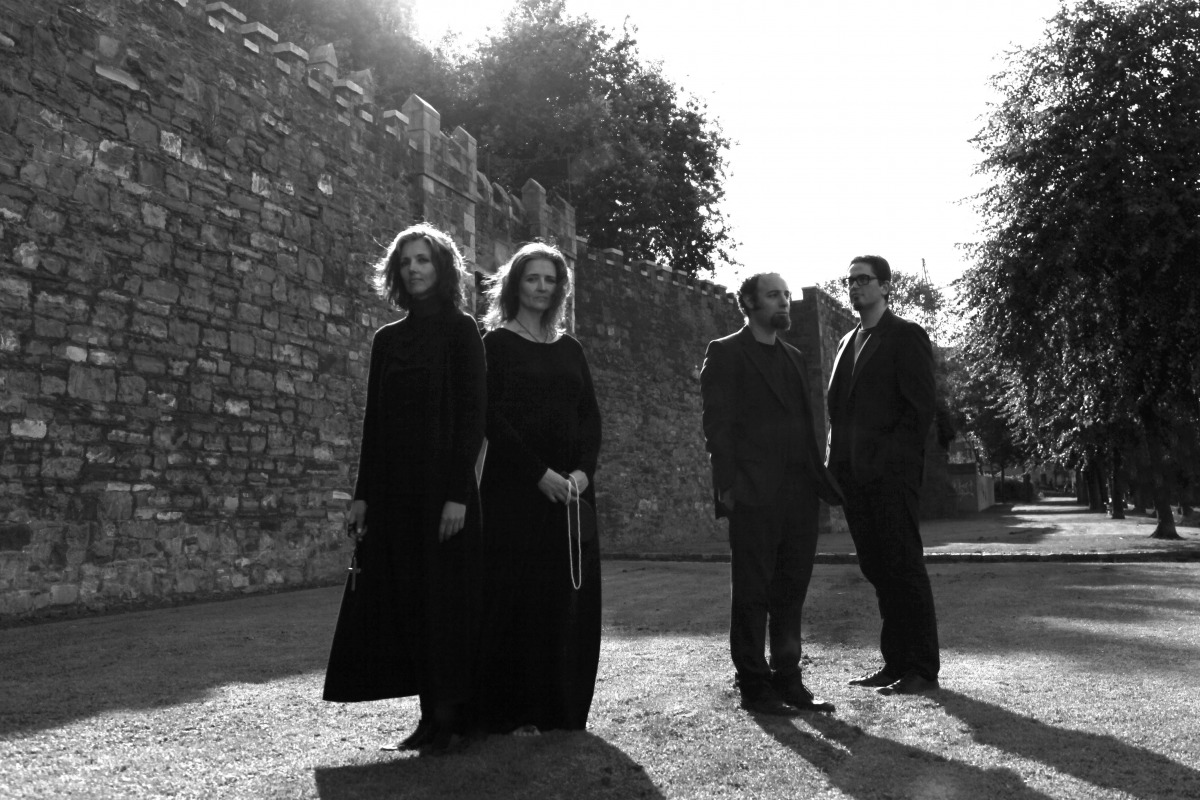I was looking for an excuse to sing with some of my favourite musicians: Nick Roth, Francesco Turrisi and my sister Deirdre O’Leary. I’d had the pleasure of working extensively with all of them in the past, but never all together at once. Since we all come from and inhabit different musical worlds I had to find a place where those worlds could overlap harmoniously. Nick plays saxophones and percussion in mostly jazz and contemporary realms. Francesco plays keyboards and percussion in mostly early music and jazz domains. Deirdre is a classical and contemporary-classical clarinettist and I sing mostly early music and traditional songs. We all delight in improvising.
I’ve long been drawn to the fabulously intricate music of the fourteenth century Ars Nova and Ars Subtilior, an even more sophisticated sub-genre of the Ars Nova that developed in the last quarter of that century especially at the court of the anti-pope in Avignon. This music features rhythmically and contrapuntally complex lines that remind me of avant-garde jazz, lines of notated ornamentation playing against each other like wild improvisations.
I wanted a story that could be spun into a musical project and, having a penchant for all things gothic (especially of the fourteenth century kind), started researching the Black Death. While I was studying the effects of the plague in Ireland I came across a remarkable story of colliding cultures in medieval Kilkenny, a story so grimly enthralling that it could have come straight out of Hollywood (I wish it could have been directed by Stanley Kubrick!).
The story took place in Ireland at a turbulent time, a time of invasions, war, lawlessness, famine and plague. A time of fear, violence and almost unimaginable mutability.
In 1317 Richard de Ledrede – an English Franciscan of the Order of Friars Minor – arrived in Kilkenny, appointed by the papal court in Avignon as the new Bishop of Ossory (1317–1361) and immediately set about challenging the secular authorities and making a name for himself as a zealous moraliser and “scourge of heresy”. In 1324 he arraigned Dame Alice Kyteler, a wealthy businesswoman and serial espouser (she married four times) on the charge of being a witch. He alleged that she denied Christ, enchanted the citizens of Kilkenny with magic potions – made from entrails of cocks which had been sacrificed to demons, dead men’s nails, hair and brains of boys who had been buried unbaptised – all cooked up in the skull of a decapitated thief, that she had an incubus named Artisson with whom she had sex and who manifested as either a cat, a shaggy black dog or a black man, and that she murdered her first three husbands and was poisoning her fourth.
Dame Alice, however, had powerful allies who protected her and facilitated her flight to England where she vanished from history. The notorious inquisition that ensued was peppered with political intrigue, excommunication, charges of heresy and counter-charges of heresy with the bishop himself being imprisoned in Kilkenny castle for seventeen days during which time he placed the entire diocese under interdict (no masses, baptisms, marriages or burials could take place). When released, he refused to leave quietly, but had his full episcopal regalia brought to him and, with his clergy and parishioners, made a solemn procession to St Canice’s Cathedral where a Te Deum mass was celebrated.
Though Dame Alice escaped with her life, her servant Petronilla de Meath was not so fortunate. She was captured, flogged through six parishes and a confession of sorcery was extracted. She was burned alive at the stake for the heresy of witchcraft, the first person in history to be thus charged and immolated.
Dame Alice’s son William Outlaw was charged with heresy for defending his mother. He was forced to recant, hear at least three masses a day for three years, feed the poor and to pay for the roof of St Canice’s Cathedral to be covered with lead. The roof subsequently collapsed under the weight.
This became the backdrop to our music.
The Red Book of Ossory is a fourteenth century medieval manuscript compiled in Kilkenny. Pre-eminent among the manuscript’s texts are sixty remarkable Latin poems by Bishop Richard de Ledrede. The same fertile imagination (Ledrede’s) that composed the phantasmagoric sorcery charges also composed beautiful, esoteric and richly imagistic poetry. The bishop instructed that these verses be sung by the priests, clerks and choristers of St. Canice’s “on the important holidays and at celebrations in order that their throats and mouths, consecrated to God, may not be polluted by songs which are lewd, secular, and associated with revelry, and, since they are trained singers, let them provide themselves with suitable tunes according to what these sets of words require”.
“Well,” I thought, “I’m a trained singer!”. So I set to work finding suitable tunes. I spent countless (happy) hours wandering through various medieval music sources (Chansonnier du Roi, Llibre Vermell de Montserrat, Codices Chantilly, Modena, Squarcialupi, etc.) and made speculative reconstructions of many of the bishop’s hymns.
Then, together with my fellow band members, in what was a charmed and wondrous process, we deconstructed those reconstructions. It was a true joy to make music with Nick, Deirdre and Francesco, a very happy and collaborative collision of cultures both in our rehearsals and onstage. And when we came together to make a record of our project, the synergetic spirit lived on as we made an essentially live recording, making music together in the same space and time.
With the name Anakronos I feel we are allowed (if not obliged) to take certain liberties with traditional notions of proper chronology. So, bass clarinet, soprano saxophone and Nord synthesizer breathe electric life into music that was written at least five centuries before electricity was harnessed, music that was written before and after the bishop’s poems, but that could have been sung to his words in his lifetime. And music that I wrote and we improvised.
But why sing the words of a witch-burner? Because they’re beautiful and I find it interesting to contemplate the contradictions that exist within people. As Stanley Kubrick said when asked if his characters were good or evil, “They are good AND evil!”.
For more about Caitríona O’Leary’s work see her official website. Anakronos ‘The Red Book of Ossory’ is now available via Heresy Records as a CD and high-quality download (available here) and streaming across online platforms.

Caitríona O’Leary (photograph by Laelia Milleri)




